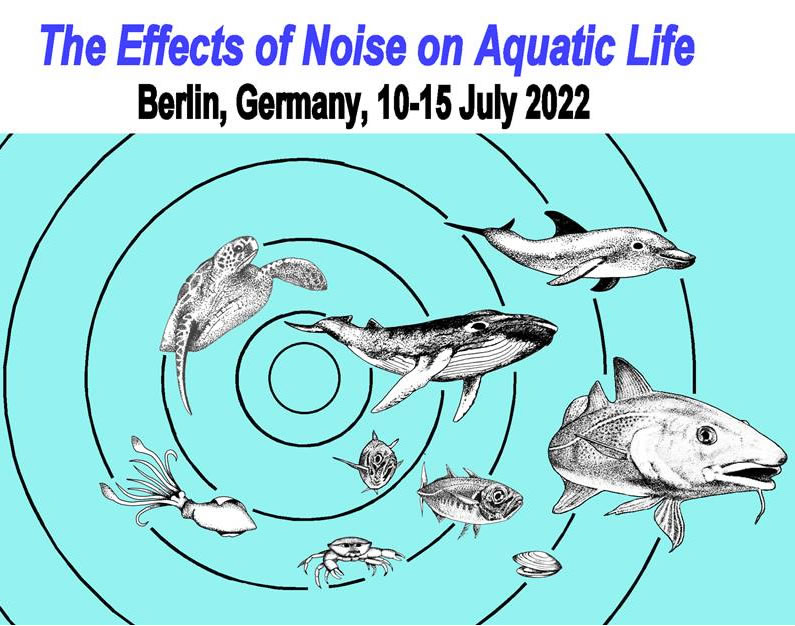

Comments: (no paper yet)
Ref.: Int. Conf. on the Effects of Noise on Aquatic Life, Berlin (Germany),
July 2022
Abstract:
Economy globalization and the continuous search for food, energy and raw materials led to an
estimated 3 dB/decade increase of ocean noise intensity worldwide (Frisk, 2012). The full impact
of this increase is still unknown, but evidence is piling up towards a deterioration of the marine
habitat, the disruption of the life cycle of a number of endangered species and biodiversity loss.
Determining the level of anthropogenic noise - the so-called excess noise level (ENL) (Farcas,
Powell, Brookes, & Merchant, 2020) - and building identifiable meaningful indicators for sup-
porting marine management policies currently requires extensive observation data and computer
modeling.
Acoustic recordings in the 20-1000 Hz frequency band, were performed 6 hour a day during
June 2018 at three locations to the Southwest of Faial-Pico Islands, in the Azores archipelago,
a well known habitat for over twenty cetacean species. For modeling purposes, anthropogenic
noise was reduced to ship traffic drawn from AIS data and environmental sound was attributed
to wind action on ocean surface. Data - model comparison at these three locations allowed to
introduce a field calibration procedure based on the linear transformation of sample distribution
probability density functions in the sound pressure level domain. This transformation turns out
to be non-linear in the power domain where ENL is estimated as the instantaneous difference
between modelled sound and wind sound intensity levels. The broadband version appears as the
sum of the 1/3 octave bands transformed power over the data recording frequency band.
Assuming that model data may have a systematic bias, field calibration is extended to a larger
area covering four islands of the Azores archipelago for the full month of June 2018. The
results show that field calibrated ENL sound maps are in line with the shipping distribution
in the area, revealing a number of potentially threatening hotspots due to sound propagation
conditions off shipping routes and vessel traffic patterns between islands. Field calibrated ENL
addresses the need for a quantifiable measure of ocean noise and therefore offers a basis for
building suitable continuous anthropogenic noise pollution indicators as required to support EU
ocean management policies under MSFD.
Estimating ocean noise is crucial for its impact on marine life and biodiversity. Coverage of large
areas for long periods of time requires a massive modeling effort that uses shipping AIS and
wind data to produce ocean sound distributions, known as sound maps. However, sound maps
require matching with actual measured sound data, and eventual calibration. Field calibration
strategies have been proposed and tested at small scale and in particular for coastal setups. This
paper explores the possibility of using oceanic communication cables (smart cables) equipped
with opportunistic acoustic receivers to calibrate sound maps at oceanic scale. The scenario
is that of the CAM-ring that connects continental Portugal, Azores and Madeira archipelagos
in a closed loop. Results obtained with real data on a trial in Azores and then a long range
simulation in the abyssal plain between Portugal and Azores show that the proposed Bayesian
sound estimator allows to optimally update the model estimate with the measured data giving an
effective reduction of the expected Bayesian mean square error (BMSE). The radius of BMSE
reduction is larger than the distance between smart cable repeaters (approximately 60 km),
leaving a good hope for effective sound maps calibration along the cable route.